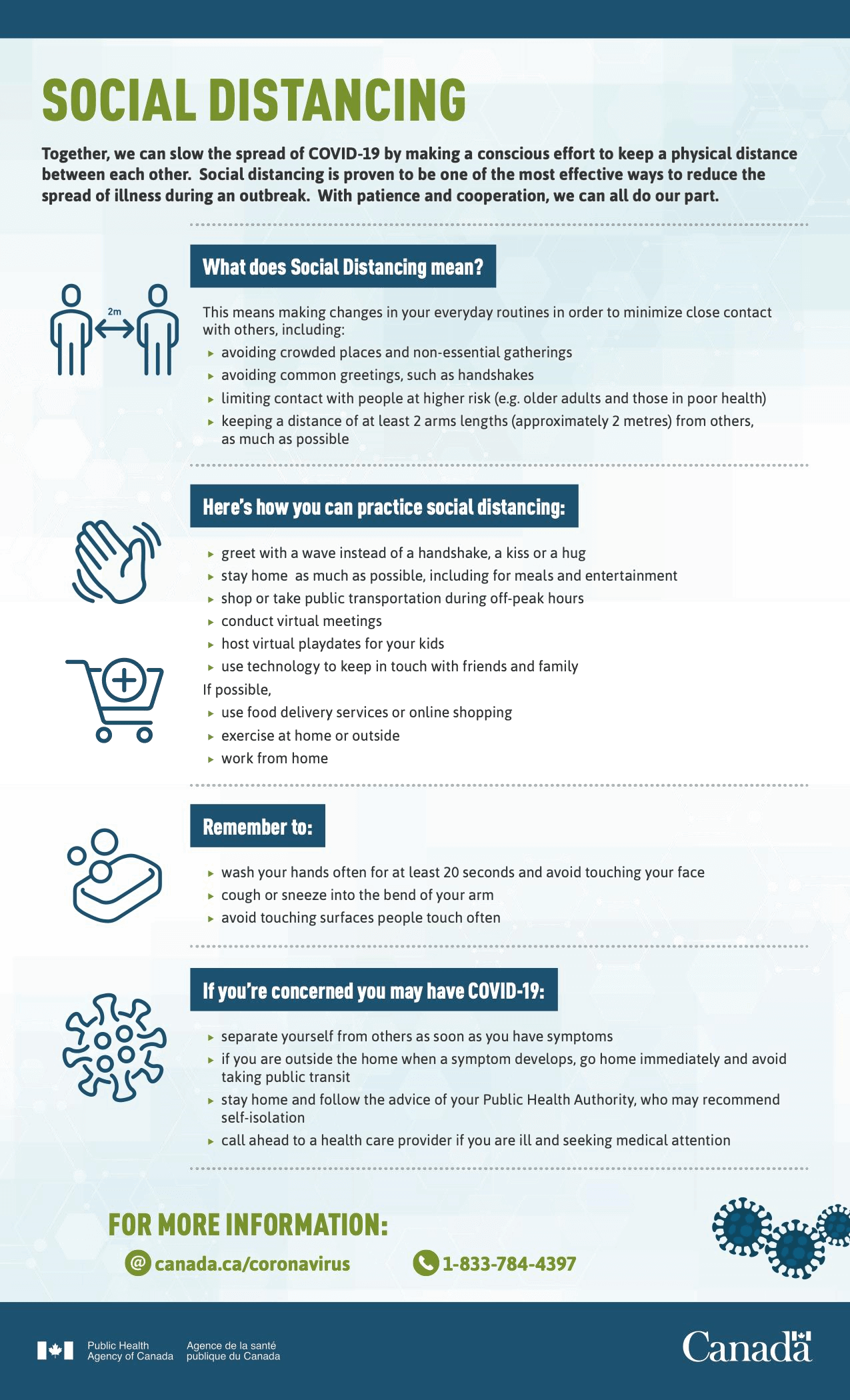On-Site Protection Measures
This protocol applies to all BelVan Construction Employees, Subcontractors and Visitors.
Worker Responsibility - All workers are expected to monitor themselves to ensure they are fit for duty. Prior to accessing the jobsite all workers and visitors must complete the attached COVID-19 Worker Checklist.
The purpose of the Checklist is to create a database of individuals attached to each project for future communication but more importantly to serve as a pre-screening of all who are required to work or visit the jobsite.
These checklists will also enable the Site Supervisor to understand and review the health of each worker under their supervision.
Anyone who answers “yes” to any of the questions will NOT be permitted access to the worksite. The Site Supervisor must notify the Health & Safety Advisor or the Superintendent immediately.
Basic rules
The Public Health Agency of Canada (PHAC) recommends adopting the same basic respiratory hygiene measures applicable to the prevention of seasonal infectious diseases like influenza and the common cold.
These recommended individual hygiene measures include:
- Wash your hands often with soap and water for at least 20 seconds, especially after using the washroom - use alcohol-based hand sanitizer if soap and water are not available
- Avoid touching your eyes, nose and mouth with unwashed hands;
- When coughing or sneezing: cough or sneeze into a tissue or the bend of your arm, not your hand and dispose of any tissues you have used as soon as possible in a lined waste basket and wash your hands afterwards
- Avoid hugs and handshakes; instead, opt for a friendly verbal greeting
- Use automatic door openers wherever available or prop open doors if possible
- Use your sleeve or gloves to touch “common” buttons
As a precaution, when group meetings are necessary, we ask our Site Supervisors to limit thenumber of meeting participants to no more than four people and demand that all participants respect the minimum social distancing guideline of 2 metres (6’) being recommended by the public health authorities.
We ask our trade partners to examine their work assignments on-site to ensure all workers are planning their work together with consideration as to safe distancing of 2 metres apart and interaction.
Please collaborate with BelVan Project Manager to come up with a schedule or other accommodations as to work situations where multiple trades are working together out of necessity.
As much as possible, limit workers to one person per 10 x10 room (for example)
Limit elevator occupancy to 2 people
Where practical and relevant take coffee and lunch breaks at off-peak times. Bring your lunch from home instead of getting take-out as many shops are now closed.
In general, limit or completely avoid direct skin contact with all “High Touch” surfaces, samples of these surfaces are listed below:
- Door-knobs and push bars
- Coffee makers and water fountains
- Shared radios and phones
- Handrails
- Toilet flush handles
- Chemical toilets; you should also place wash stations or, at a minimum, hand sanitizers outside the door
- Refrigerator door handles
- Conference/meeting room surfaces (for example, table-tops, chairs, PC cables, markers) and telephones
- Elevator buttons
- Copiers and fax machines
- Personal keyboards, offices, heavy equipment controls, mobile phones, and small personal tools are frequently used only by one or two people; therefore, they may be cleaned less often.
Clean all ‘high-touch’ surfaces such as door-way entrances, elevator buttons, keyboards, and phones.
Encourage regular cleaning of offices, trailers, containers, workshops and other facilities. The frequency of cleaning each work area and surface depends on the number of people who use it, the duration of use, and the presence of any objects which people might handle with their bare hands.
Examples of surfaces that should be cleaned daily include equipment cabinets, planning boards, remotes, battery chargers, and shared tools.
“High-touch” surfaces should be cleaned and disinfected every work shift. As well, avoid direct skin contact if at all possible. Some examples of high-touch surfaces include:
- Door-knobs and push bars
- Coffee makers and water fountains
- Shared radios and phones
- Handrails
- Toilet flush handles
- Chemical toilets; you should also place wash stations or, at a minimum, hand sanitizers outside the door
- Refrigerator door handles
- Conference/meeting room surfaces (for example, table-tops, chairs, PC cables, markers) and telephones
- Elevator buttons
- Copiers and fax machines
- Personal keyboards, offices, heavy equipment controls, mobile phones, and small personal tools are frequently used only by one or two people; therefore, they may be cleaned less often.
Frequent cleaning of protective eyewear and gloves
Surfaces such as doors, walls, frames and trim require occasional cleaning and should be disinfected every 2 or 3 days. Shared and personal tools such as brushes, painting poles, sanders etc should be disinfected daily.
Moreover, we recommend, whenever possible, wearing gloves. Removing and then putting them back on can cause cross- contamination so remember to wash your hands or use hand sanitizer prior to putting them back on. We recommend washing/cleaning or replacing gloves at the end of every day.
Disinfectants and sanitizers
We will provide a supply of disinfectants and hand sanitizers throughout the site for general use. The use and care of these products will be discussed during the morning tailboard meeting. Please consult with the Site Supervisor if you have any questions.
Additional measures for toilet facilities
1. Soap / paper towel dispensers, hand dryers and hand sanitizing stations should be checked frequently. Place additional temporary soap dispensers in locations where it often runs out, or where fixed dispensers don’t work properly.
2. Place a garbage bin near the toilet’s exit doors to encourage people to use a paper towel to open the door. If necessary, set up a separate supply of paper towels near the exit door.
3. Place paper towel dispensers near high-touch surfaces such as water coolers, kitchen/break room counters, conference rooms, and other locations with shared high-touch surfaces.
COVID-19 WORKER CHECKLIST

